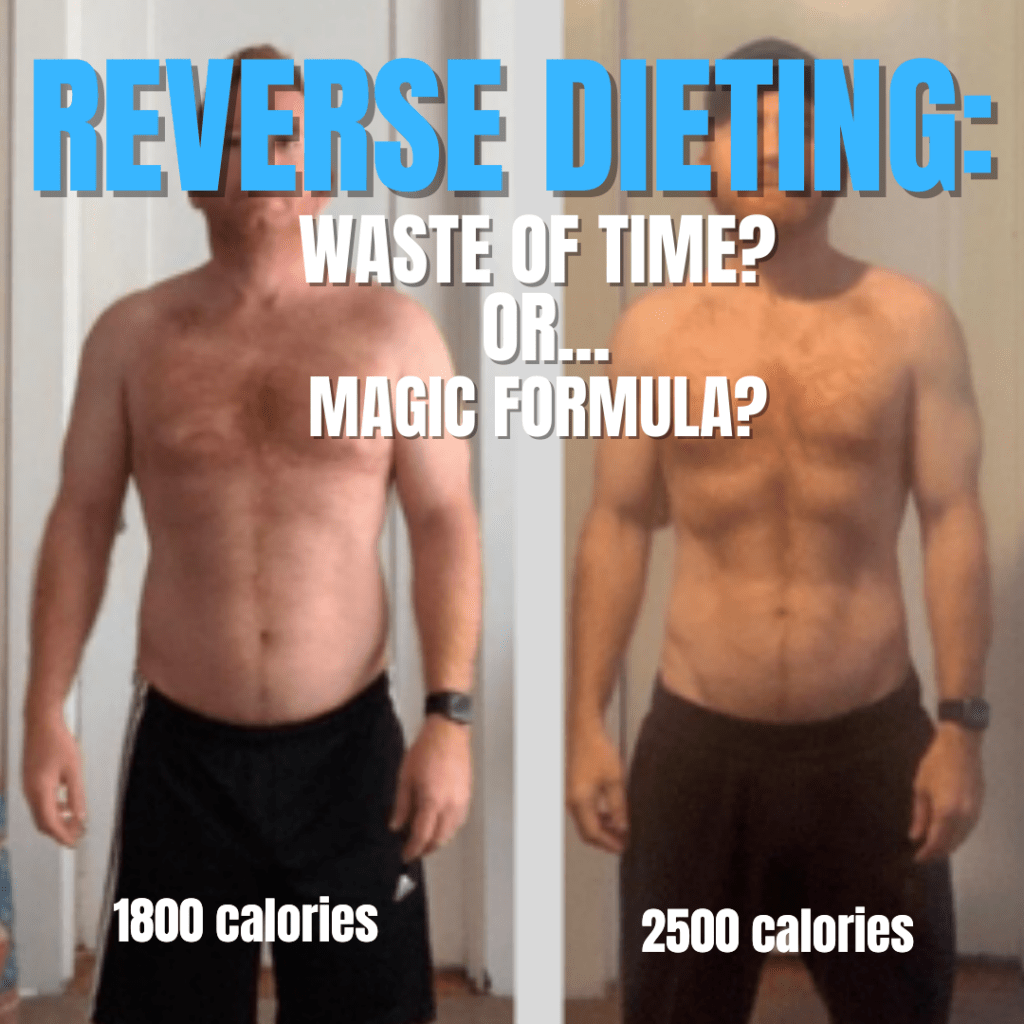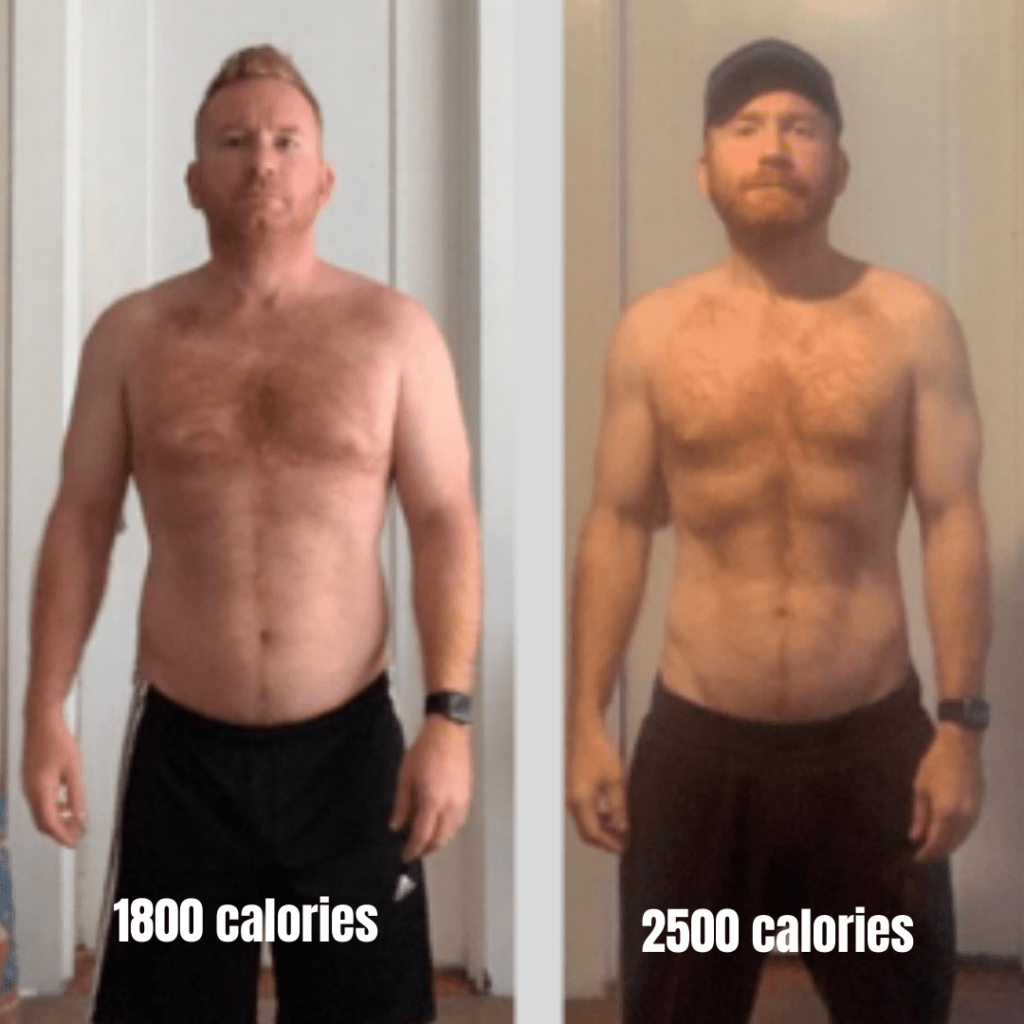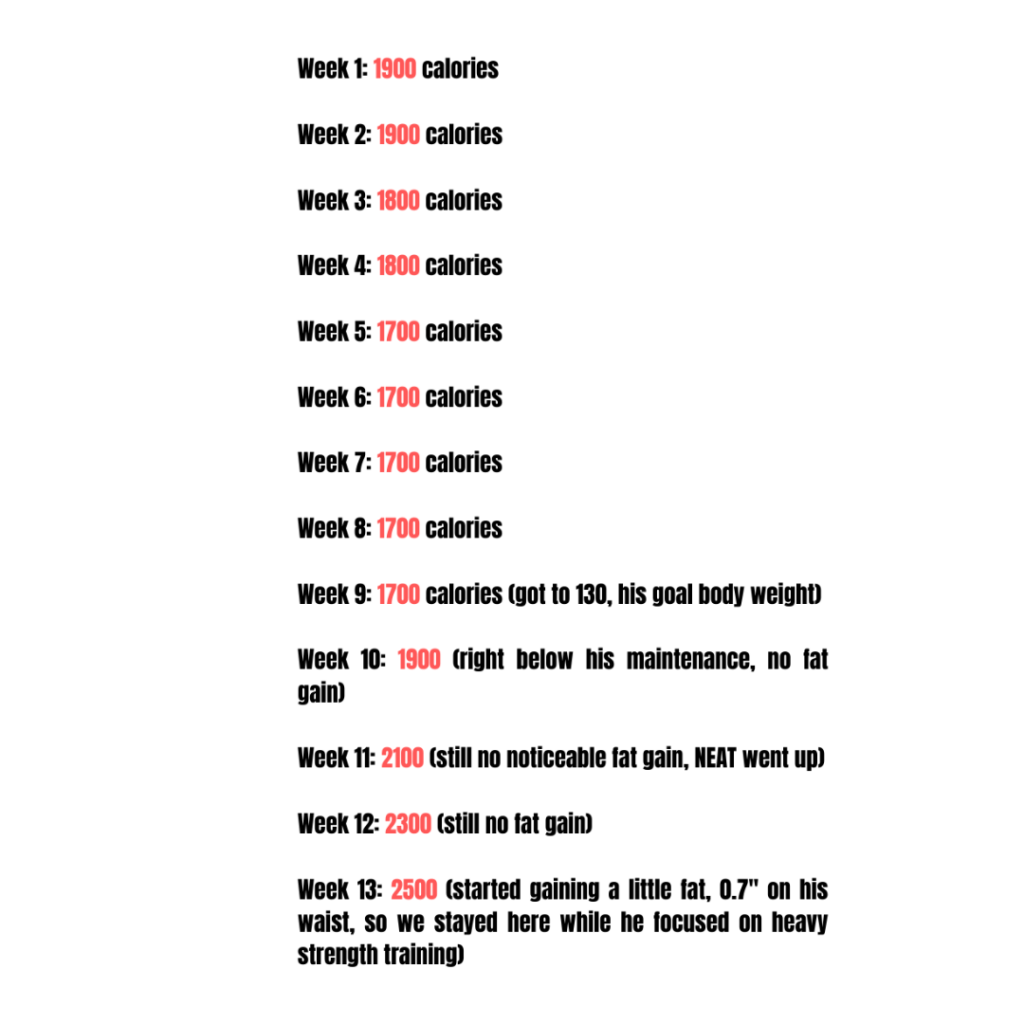If you’ve made it to this page, you have probably heard about reverse dieting. If you haven’t, check out my article on reverse dieting for slow metabolism. The latest research on this topic prompts the question, “Why Reverse Diet? Is it a waste of time?”

In that article, I talk about the reasons why reverse dieting may be a good idea, but is it really necessary?
Let’s break it down into 3 reasons why this may be a total waste of time.
Metabolic Adaptation
There are many reasons why someone may want to do a reverse diet. Generally speaking, it is usually after a cut or a calorie deficit phase.
That being said, if you have been in a deficit for quite some time, your body has adapted to the lower calories that you have been eating.
In other words, your TDEE has probably went down. Your maintenance calories will be lower than they were when you started.
In order for you to come out of this deficit and gain the least amount of fat possible, it may be smart to not just jump straight into your maintenance calories right before the cut.
EXAMPLE:
Jim was eating 2,500 calories at maintenance and then dieted for 16 weeks at 2000 calories. He may not want to jump right back up to 2,500. It may be a good idea to jump up to 2200 or 2300 and see what happens from there.
If he stayed there for a couple weeks, watched how his body responded, if his waist measurements and body weight stabilizes, and he doesn’t see any fat gain from these metrics, it may be okay to raise calories a bit, and go into a “gaintaining” phase.
Diet breaks
If you have been dieting for quite some time, and still have some fat you want to lose, taking a diet break may be essential for adherence.
Many of my online coaching clients tend to struggle with consistency around the 12 week mark, and this makes it hard to continue.
Taking a strategic diet break may be the best idea at this point in the game.
Keep in mind, most people do diet breaks totally wrong.
The point of a diet break is to give your body a chance to recover from the stress of fat loss. If you just go back to eating like an asshole, you aren’t doing yourself any favors from a stress reduction standpoint.
Now I am not saying you have to reverse diet your way out of your deficit. You may want to increase calories by 10% for a week, and then another 10% for another week until you reach your predicted maintenance.
EXAMPLE:
Jim is about halfway to his goal bodyweight, eating 2,000 calories in his deficit for 12 weeks. Instead of going right back up to his maintenance (2500 calories), he goes up to 2250 for a week. His weight stabilizes. He sees no changes in the scale, then goes back up to 2500. He still sees no weight gain. Jim stays here for about 4 weeks until his diet break is over and he continues his fat loss phase.
Reverse dieting in this situation would take forever and adding back 100 calories per week to his daily total. It would be very tedious and may result in even poorer adherence to his deficit.
It Is Not “Magic”–WHY A REVERSE DIET WILL NOT FIX “STARVATION MODE”…
There are some recent studies done that actually prove that it is basically just going from a fast cut to a slower cut.
In essence, you will get back to the same body fat % if you were to just go back up to maintenance or right below it.
So, if you are looking for the magic way to eat more food and lose more body fat, and you have been told about how your body is in “starvation mode”, it’s just not true.
You may have seen posts on IG like this:

Why IG Models Are Using Reverse Dieting To Sell Their Coaching
This post would be extremely misleading, but I see it on Instagram ALL THE TIME. It is usually followed by some caption about how you should not be eating 1200 calories, and “my clients eat more food and don’t starve themselves look at these results…”
These coaches want you to believe they have the “magic formula” to be able to eat more food and get even leaner.
The problem with these kinds of posts is they don’t talk about the middle stages between this before and after.
Here’s what Justin’s calories looked like in between these pictures: (Keep in mind he weighs 150 on the picture on the left and 130 on the right)
He already knew his maintenance calories when we started working together. I decreased his intake by about 20% as he had a deadline he wanted to get lean by.
JUSTIN’S CALORIE DEFICIT SCHEDULE:

There you go. That was his 13 week cut along with his maintenance phase.
Now, this may look easy on paper. What you don’t see is how low his adherence and consistency was on week 8. He was struggling to find energy to exercise and hang out with people.
Once we added back in some calories on week 10 he instantly felt way better.
So you see, there was a period where he went even lower in calories in order to get him lean. We didn’t just increase his calories and him magically get shredded like you favorite IG booty building coach would have you believe 😉
CONCLUSION…Why Reverse Diet? Is IT A WASTE OF TIME??
Reverse dieting is not a “magic formula”.
Trust me, I wish it was, and have changed my stance on this since I wrote my first article on it.
As a matter of fact, you may just be better off going back to maintenance. Skip the unnecessary weeks of meticulous tracking to get you back to where you feel better after your cut.
PS: If you want to read up a bit more on reverse dieting, check out this interview Jeff Nippard did with Lyle Macdonald.

